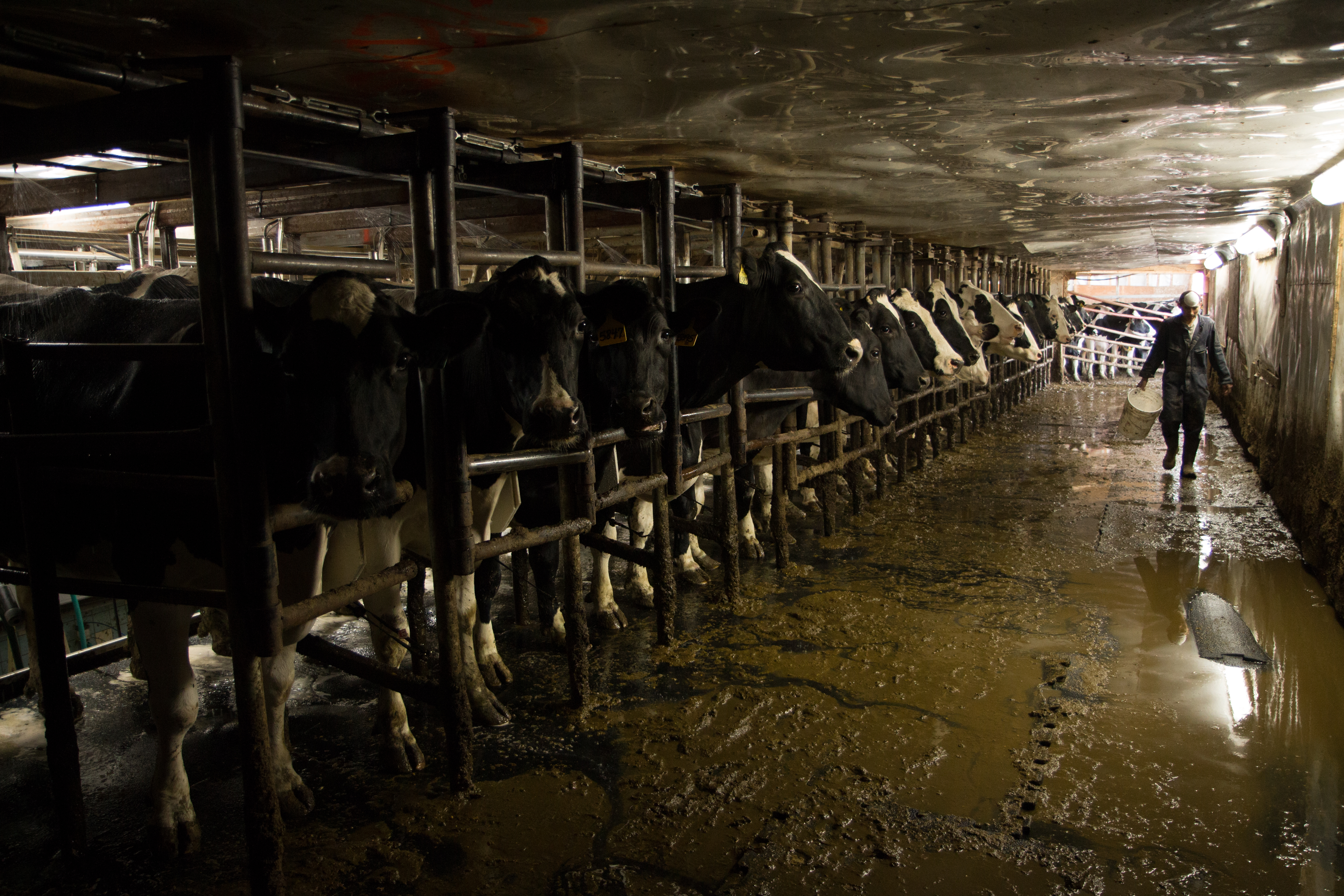"This," the worker explains, summing up the image in front of us, "is the base material for the dairy industry." Guided by the elicitation method, we discuss my photo and its depiction of the milk production process. Sprinklers calm cows as they wait to be milked. Ray (a pseudonym), the pusher, moves swiftly about the barn, watchful as to not be kicked by the animals. He is responsible for separating cows into groups, guiding them into the parlor, and cleaning manure from their stalls. He works 13-14 hours a day, 365 days a year.
Over 1,000 workers form the backbone of Vermont’s consolidating $2.2 billion dairy industry. My previous research indicates farmworkers are one of the most exploited groups in the U.S. (Bon Appétit Management Company, United Farm Workers, & Oxfam, 2011). A 2014 survey of Vermont dairy workers designed and conducted by Migrant Justice—a worker-led human rights group based in the state—revealed that 40% of workers do not receive minimum wage, 30% work seven or more hours in a row without break, and 20% do not have access to bathrooms or water at work. Corporations exert price pressure with their domination of the market while suppliers, including precarious farmers and workers, are squeezed. Farmworkers’ experiences are part of a larger story where social, political, and economic forces intersect with race, class, and immigration status.
Consistent with Cosgrove and Daniels’s (1988) theory, duplicity of landscape, which elucidates how capital obfuscates and naturalizes conditions of production, my photo denies and disrupts a bucolic vision of Vermont. A look inside a dairy barn reveals the dissonance between the progressive state and structural marginalization within it. Challenging the notion of Vermont exceptionalism—moral rectitude and immunity to problems—this picture engages with the reality of worker exploitation, poverty, and discrimination that is ubiquitous in industrial food chains everywhere.
To understand the landscape, we must be attentive to the positions of those who labor unseen. Migrant Justice is currently implementing Milk with Dignity, a program created and enforced by the workers it aims to protect. It is a pioneering adaptation of the United Nations-lauded worker-driven social responsibility (WSR) model. Through WSR, Vermont dairy workers, primarily migrants from central and southern Mexico, seek decision-making authority to assure their right to a safe workplace, decent housing, fair wages, and a voice in supply chain policies. As Milk with Dignity forges ahead, photos are evidence that can create meaning in unfolding historical, sociological, and political circumstances (Harper, 2012).
My image speaks to profound issues underlying Migrant Justice’s struggle for change. Ray’s tucked head, hidden eyes, and reflection in a manure puddle suggest his isolation and oppression. Yet, unlike the cows’ corralled bodies, Ray treads freely. His figure exhibits agency and action. Springer (2014) calls migrants’ decisions a “revolution of the everyday where individuals become insurgents by refusing the existing structures of domination and walking their own way” (p. 260). Ray’s forward momentum symbolizes the striving for dignity of employment that is worker-led.
This picture, part of a long-term collaborative project with Migrant Justice, defies farmworkers’ invisibility. It conveys workers’ potential to transform the landscape through collective empowerment. Dairy workers tell me that labor abuse in U.S. agriculture is not inevitable. My images hint at shifts of power to come.
Bon Appétit Management Company, United Farm Workers, & Oxfam. (2011). Inventory of Farmworker Issues and Protections in the U.S.
Cosgrove, D., & Daniels S. (1988). The Iconography of Landscape. Madison: University of Wisconsin Press.
Harper, D. (2012). Visual Sociology. New York: Routledge.
Springer, S. (2014). Why a radical geography must be anarchist. Dialogues in Human Geography, 4(3), 249-270.

Commentary on Rachel Tanur's Works: NYC Cow Parade